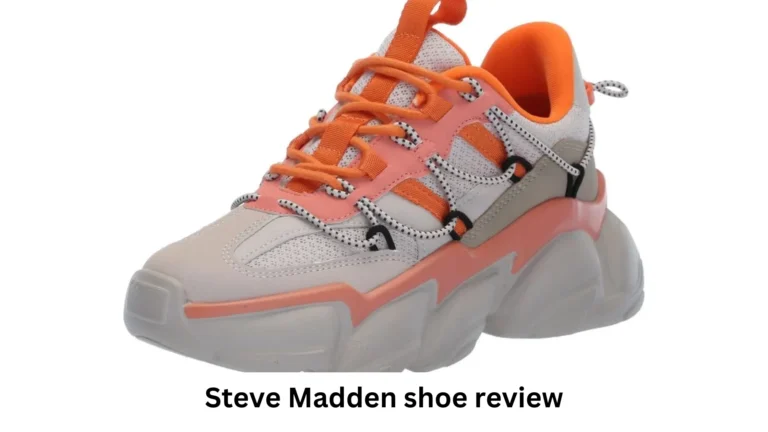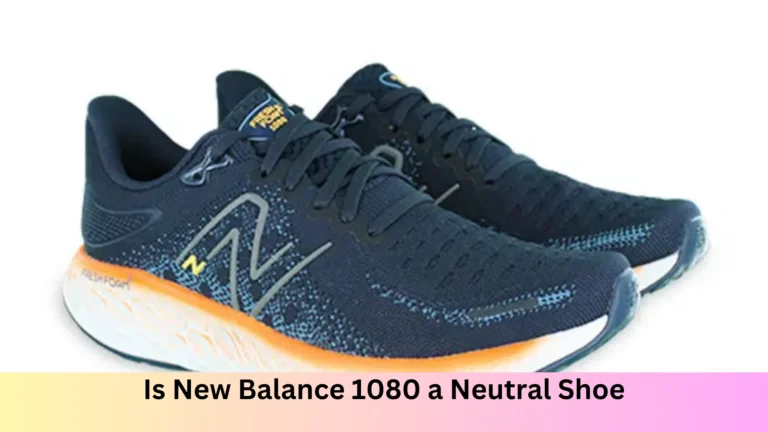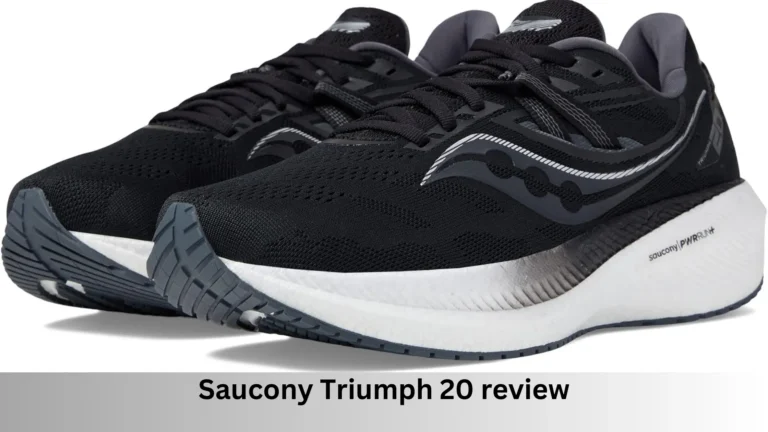
Running is one of the most accessible forms of exercise, offering immense physical and mental health benefits. However, without the right gear—especially the right running shoes—this beneficial activity can lead to discomfort or even injury. Whether you’re a seasoned marathoner or a beginner aiming to complete your first 5K, choosing the best running shoes is crucial for performance, comfort, and injury prevention.
In this comprehensive guide, we’ll explore everything you need to know about running shoes, from different types and top brands to key factors you should consider when buying. By the end of this article, you’ll be equipped with the knowledge to choose the perfect pair to match your running needs.

Here are 6 main points you should remember when you buy good running shoes
1. Why the Right Running Shoes Matter
Before diving into the specific models and recommendations, it’s essential to understand why investing in the right running shoes is so important.
Injury Prevention
The human body endures significant impact during running, with every foot strike exerting up to three times your body weight. Poorly fitting or inappropriate shoes can cause problems such as shin splints, plantar fasciitis, and knee pain. A good pair of running shoes will absorb shock and offer support where you need it most, reducing the risk of injury.
Improved Performance
The right running shoes can also boost your performance. Lightweight, well-cushioned shoes help you run faster and longer by providing adequate support and minimizing fatigue. For serious runners, having the right footwear can make the difference between a personal best and a race-day disaster.
Comfort
Running, especially long distances, can take a toll on your feet. Shoes that don’t fit properly can cause blisters, calluses, and general discomfort. Finding shoes that offer a snug yet comfortable fit ensures you’ll be able to focus on your run, rather than the pain in your feet.
2. Types of Running Shoes
There isn’t a one-size-fits-all approach when it comes to running shoes. Depending on your running style, foot structure, and the terrain you’re running on, the type of shoe you need may vary. Here are the most common types of running shoes:
Road Running Shoes
These are designed for running on pavement, asphalt, and other hard surfaces. Road running shoes are typically lightweight, with plenty of cushioning to absorb shock. They often have smooth outsoles, providing adequate traction for road and treadmill running.
Trail Running Shoes
If you’re running on uneven terrain like trails, rocks, or dirt, trail running shoes are essential. They feature a more rugged design, with thicker treads for better grip on loose surfaces. The upper is usually reinforced to protect your feet from sharp objects, like rocks and roots.
Cross-Training Shoes
For runners who mix in other forms of exercise, such as weightlifting, cross-training shoes offer the versatility needed for multiple activities. These shoes are more flexible than specialized running shoes but still provide adequate cushioning for shorter runs.
Minimalist and Barefoot Shoes
Minimalist shoes are designed to mimic barefoot running. They offer little to no cushioning and encourage a forefoot strike, which can help some runners improve their form. However, they aren’t ideal for beginners or runners with certain foot issues, as they offer minimal protection and support.
Stability Running Shoes
These are designed for runners who overpronate (when the foot rolls inward excessively). Stability shoes feature additional support in the midsole and arch to correct this issue and help prevent injury.
Motion Control Running Shoes
If you severely overpronate, motion-control shoes are your best bet. These shoes provide maximum support, especially for those with flat feet. They feature a stiffer heel and are built to limit excessive foot motion.
Cushioned (Neutral) Running Shoes
For runners with a neutral gait or those who underpronate (when the foot doesn’t roll inward enough), cushioned running shoes are ideal. They offer extra padding, particularly in the midsole, to absorb impact and reduce stress on the joints.
3. Factors to Consider When Choosing Running Shoes
When selecting the best running shoes, consider the following factors to ensure you find a pair that’s perfectly suited to your needs:
Foot Type and Pronation
Knowing your foot type is crucial for picking the right shoes. Pronation refers to how your foot rolls inward as it makes contact with the ground. You can identify your foot type by visiting a specialist store, or by performing a “wet test” where you step on a piece of paper with wet feet and examine the shape of your footprint.
- Neutral Pronation: The foot rolls inward just enough to absorb shock properly.
- Overpronation: The foot rolls inward too much, which can lead to injury if not corrected.
- Underpronation (Supination): The foot doesn’t roll inward enough, leading to extra stress on the outer foot.
Once you know your pronation type, you can select shoes that offer the right level of support.
Running Terrain
Are you running on roads, trails, or both? The terrain you frequent will help determine whether you need road running shoes or trail running shoes.
- Road Running Shoes: Ideal for flat, hard surfaces like concrete or asphalt.
- Trail Running Shoes: Best for uneven, softer surfaces like dirt trails or rocky paths.
Cushioning
The level of cushioning in a shoe affects its comfort and shock absorption. However, more cushioning doesn’t always mean better. Some runners prefer a more minimalist feel, while others opt for maximum cushioning for long-distance runs.
- Maximalist: Heavily cushioned shoes, often used for long-distance running.
- Minimalist: Bare-bones shoes for runners who want to feel the ground more.
Fit and Sizing
A running shoe that doesn’t fit well can cause blisters, discomfort, and injury. Make sure your shoes offer a snug fit, but with enough room in the toe box to prevent rubbing or cramping.
A good rule of thumb is to leave about a thumb’s width of space between the tip of your longest toe and the end of the shoe.
Weight
Lighter shoes are often preferred for racing or speed workouts, while heavier shoes offer more cushioning and stability for long-distance running. Think about your priorities—speed or support—when choosing a shoe.
Durability
A high-quality pair of running shoes typically lasts between 300 to 500 miles. Consider the durability of the outsole and the upper material when choosing a pair, especially if you’re logging high mileage.

4. Top Running Shoe Brands and Their Best Models
Several brands dominate the running shoe market, each offering a variety of models tailored to different needs. Here’s a look at the best running shoes from some of the top brands:
Nike
Best Models:
- Nike Air Zoom Pegasus: Known for its versatility, the Pegasus is suitable for both beginners and experienced runners. It offers responsive cushioning and a comfortable fit.
- Nike ZoomX Vaporfly NEXT%: Ideal for racing and setting personal bests, this model is designed with a carbon fiber plate for enhanced speed and energy return.
Adidas
Best Models:
- Adidas Ultraboost: Famous for its cushioned comfort and sleek design, the Ultraboost is perfect for long-distance runners seeking a comfortable ride.
- Adidas Adizero Boston: This lightweight shoe is ideal for runners looking to increase speed without sacrificing comfort.
Asics
Best Models:
- Asics Gel-Nimbus: Known for its superior cushioning and shock absorption, the Gel-Nimbus is great for runners with high mileage.
- Asics Gel-Kayano: A perfect choice for overpronators, this shoe offers excellent stability and support.
Brooks
Best Models:
- Brooks Ghost: A neutral running shoe with excellent cushioning, perfect for everyday training.
- Brooks Adrenaline GTS: Designed for stability, this shoe is a go-to for runners who overpronate.
New Balance
Best Models:
- New Balance Fresh Foam 1080: This shoe offers plush cushioning for long runs, making it a favorite among marathoners.
- New Balance FuelCell Propel: With a responsive foam midsole, this shoe is ideal for runners who want a springy, energetic ride.
Saucony
Best Models:
- Saucony Endorphin Speed: A lightweight, versatile shoe perfect for fast-paced runs and races.
- Saucony Ride: Known for its smooth ride and comfort, this shoe is great for long-distance training.
5. Specialized Running Shoes for Specific Conditions
Certain conditions, like flat feet, plantar fasciitis, or knee pain, may require specialized running shoes. Here are some recommendations:
Running Shoes for Flat Feet
If you have flat feet, you’ll likely need extra arch support to prevent overpronation. Look for stability or motion control shoes that offer firm support in the midsole.
Best Models:
- Brooks Adrenaline GTS
- Asics Gel-Kayano
Running Shoes for Plantar Fasciitis
Runners with plantar fasciitis require shoes with ample cushioning in the heel and arch to reduce pressure on the plantar fascia.
Best Models:
- New Balance Fresh Foam 1080
- Hoka One One Bondi
Running Shoes for Knee Pain
Knee pain is often caused by poor alignment or insufficient cushioning. Opt for shoes that offer good shock absorption and proper support.
Best Models:
- Brooks Ghost
- Asics Gel-Nimbus
6. How to Care for Your Running Shoes
Taking care of your running shoes ensures they last longer and perform better. Here are some tips to extend the life of your running shoes:
Rotate Shoes
If you run frequently, consider having two pairs of running shoes and rotating between them. This allows the cushioning to recover between runs.
Store Properly
Avoid leaving your shoes in hot or humid environments, as this can degrade the materials. Store them in a cool, dry place.
Clean Regularly
Use a soft brush to remove dirt and debris from the outsole and upper. For deep cleaning, remove the insoles and laces, and hand-wash with mild soap.
Replace When Worn Out
Even the best running shoes have a lifespan. Pay attention to signs of wear and replace your shoes after 300 to 500 miles, depending on the type of shoe and your running style.
Also Read: Do Mizuno Volleyball Shoes Run Small? A Complete Guide
FAQs on Running Shoes
Q: How often should I replace my running shoes?
A: Most running shoes last between 300 to 500 miles. However, if you notice signs of wear, such as reduced cushioning or holes in the upper, it’s time for a replacement.
Q: Should I buy a size up in running shoes?
A: It’s common to go half a size up in running shoes to accommodate foot swelling during long runs. Ensure there’s enough space for your toes without the shoe feeling too loose.
Q: What’s the difference between men’s and women’s running shoes?
A: Women’s running shoes typically have a narrower heel and more cushioning in certain areas to account for anatomical differences. However, it’s most important to choose a shoe based on fit and comfort, rather than gender.
Q: Do expensive running shoes make a difference?
A: Higher-priced running shoes often feature more advanced technology, like better cushioning or enhanced stability. However, the most important factor is finding shoes that suit your running style and needs.
Conclusion
Choosing the best running shoes can significantly impact your comfort, performance, and injury prevention. With so many options available, it’s crucial to consider your foot type, running terrain, and personal preferences before making a purchase. By investing in the right pair, you’ll enjoy a smoother, more enjoyable running experience, allowing you to reach your fitness goals without the worry of discomfort or injury.
Whether you’re a road runner, a trail enthusiast, or someone who enjoys mixing different forms of exercise, there’s a perfect pair of running shoes out there for you. Take the time to find the right one, and your feet will thank you!

Hello, I am Natasha Rose. I am the founder of the website Best Running Shoes. I am from California, USA. I am a professional shoe analyzer and an employee in a shoe showroom. I like to provide information about all types of shoes.





